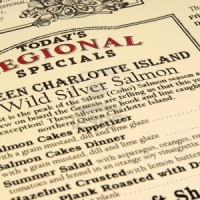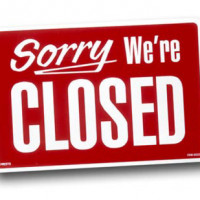The restaurant industry has typically focused on executing menu consistency and promotion to get customers in the door. Though it is plausibly the most important piece of their business, most restauranteurs don’t create product roadmaps for menu development. But whether you’re a large company or a small business, menu R&D should be part of your overall business strategy. While there are basic principles and practices for menu R&D, which apply to all foodservice models, there’s a shift that’s starting to happen. And this shift is giving independent restaurants an R&D advantage over their corporate counterparts.
Traditional R&D
The traditional menu R&D model is a non-linear, systematic process. Teams ideate culinary concepts and convert them into menu models, which are then prototyped and tested for quality and feasibility. The concepts that pass are then scaled up to launch at the restaurant and multi-unit level. Generally, everything that originally made the product unique is gutted, and what’s left is a soulless widget optimized for systemization. This traditional Harvard MBA model focuses on process rather than the customer.
New R&D
The new menu R&D model is iterative and focuses on adding value and creating awesome products. Teams are diverse, and their end goal for any product, category or strategy is to drive consumer lust and craveability. They collaborate throughout the entire process and leverage collective knowledge and insight to better navigate business challenges and create game-changing products. No silos, no one man shows, in this new R&D model eclectic small teams work together to complete a mission without being constrained by cost or feasibility.
So, let’s break down this new process.
1. Idea generation out of the office
Great ideas don’t happen when you’re trying to generate “great ideas.” They happen when you’re doing something that is in completely different from your core work. Get out of your restaurant, far away from it.
The future of your business depends on basically two abilities: coming up with great ideas to expand your business and being good at implementing those ideas. It’s that simple. There are thousands of books, speakers and articles about idea generation and innovation, but there are not a lot on how to effectively execute those ideas. They are theoretical and may make sense in a controlled lab or classroom, but rarely correlate with real time product onboarding and all of the variables associated with it. Many large food companies adopt these types of models and have difficulty with execution. They are too clunky and standardized to get any real innovation accomplished. If great ideas are not aligned with an initiative or competitive strategy, they get thrown on the shelf to collect dust. This is where independent restaurants have a huge competitive advantage over the big guys.
So here’s what you do: Come up with an extreme and irrational concept.
Shooting for the stars helps you think strategically and laterally. If you don’t start big you run the risk of thinking too safely and coming up with products of little or no added value. By conceiving big, and sometimes irrational, ideas you just might that something really special and unique makes sense. It doesn’t matter how you get great ideas, just figure out how you and your team can come up with them.
For me, it’s always when I’m running or drinking a great craft beer – times when I’m detached from work. Tell everyone to go out and think, create and dream big. Don’t expect them to sit at a table with you and develop; that never works. Listen to someone that feels restless about their idea. If they can’t seem to drop it, you need to fast track it. Most great ideas are the one’s that make us restless and anxious.
2. Understand the value and make it extrordinary
Usually at this phase, bigger companies will want to screen or concept test. But, since you’re trying to create amazing value for your customers, you should make the product better even before it’s put into a concept test.
After you come up with a great idea ask yourself and your team how you can make it more extraordinary. This is the point in the idea process where you can take it into a totally different and more profitable area. If you don’t get the “this is one of the best ideas I’ve ever heard” from a few of your team members, you haven’t hit the “insanely extraordinary” mark.
3. Concept screen with your guests, but don’t listen to anything they have to say
Most of today’s large scale innovation process integrates more sophisticated market research technology with a pre- and post-audit by too many people. Focus groups, sensory studies and surveys – don’t listen to any of them. To drive that point home, check out this Guy Kawasaki presentation about the 12 things he learned from working at Apple. If you listen to people, you will get normal. That’s fine if you want a normal restaurant. If you don’t, read on.
After you’ve created this insanely extraordinary product, stage it with your team, friends and family and guests. Gather feedback, suggestions and comments. Forget about analytics, data charts and screening techniques. Ask them: “was this menu item insanely awesome?” If the answer is no, dump it and move on. If you don’t, your amazing idea will be muddled down by everyone until it’s crafted into a plate of normal. If they answer yes, decide if you think it’s revolutionary and is worth landing on your menu. Read Malcom Gladwell’s New Yorker piece on Steve Jobs for inspiration on how you can position new ideas and monetize them on your menu.
4a. Remove or change something off your menu
This is in many ways the opposite of the first step. After putting so much creative thought into ideating, take this opportunity to simplify and revamp legacy menu items. What could you strip away or change on your menu to create something more unique and craveable?
4b. Steal a competitors idea, change it and add it to your menu
Steve Jobs was known as a tweaker, and Gladwell notes this quality was Steve Jobs’ true genius. He would take great ideas from the competitive landscape and then perfect them. There’s great products and menu items all around us. Grab one that has resonated with you and your team and tweak it. Make it better. Make it awesome. Make it yours.
5. Reverse optimization
This step goes against the traditional logic of ‘how can you make the process or product easier and cheaper to execute?’ In this model, you want to make the product unique for your employees and guests, which often means making it a little difficult to grasp and execute. In a typical optimization model the goal is to find the values of controllable factors determining the behavior of a system (menu process) that maximize productivity or minimize waste. This is not the formula you want to use to create awesome products. Easy things become commonplace, but true craftsmanship always has a difficult, often painstaking approach. This is where independent restaurants can set themselves apart from large companies. You can be nimble, boutique and not have the burden of a large infrastructure to tell you why you can’t do something.
Remember, menu innovation is not simple to manage, nor is it simple to implement. Our country doesn’t need another restaurant, food retailer or mobile app. We have way too many in the marketplace. The only thing that’s going to set your concept apart, is if it’s insanely extraordinary.






